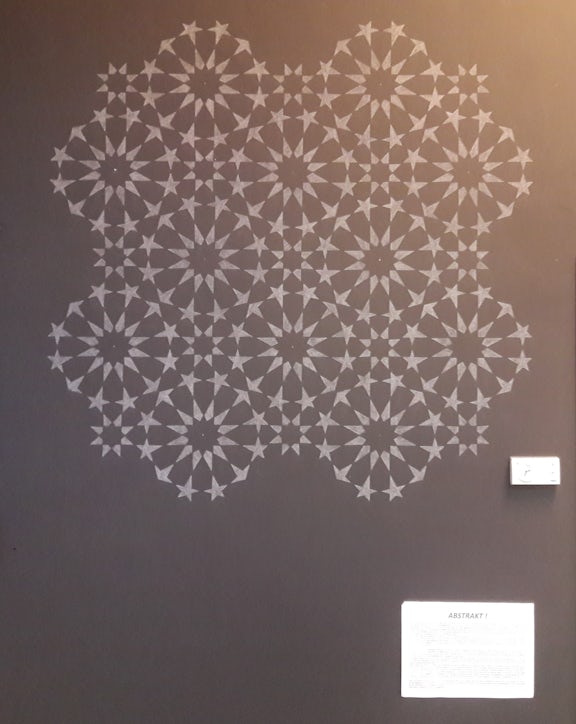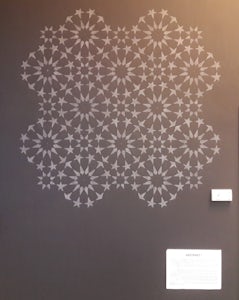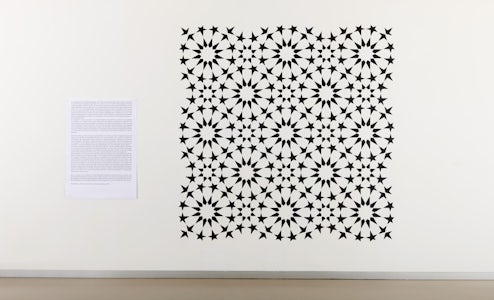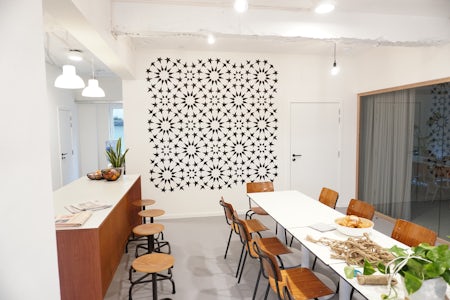Sam Eggermont

Untitled
Eggermont’s artistic model suceeds in exposing Western domination (social, political, economic and artistic): through the embracing of plurality, the recognition of the multiformity and variegation of contemporary reality, instead of the desire to consolidate it all under one name.
His aesthetic, full of appealing patterns, glimmering textures and subtle nuances of colour, serves as a sort of trap, a seductive bait used in disseminating his critical discourse. The aesthetic aspect is thus made a political instrument for cognitively reshaping general ideas with respect to periphery cultures. Eggermont can sometimes be more direct and specific than at other times, when he adopts a more abstract, poetic language in both form and content. For the artist this is all about which patterns cultures and societies produce and which patterns in turn produced the societies in question, be they human or animal. It seems like an intuitive return to a premodern line of thought, where culture and nature, the creative and the created, flow into one another, the one existing by the grace of the other.
Perhaps it is time, Eggermont seems subtly to suggest, that European/Western man became more conscious of the fact that the path to possible solutions for prevailing contemporary issues is not to be found in ever more modernity, nor progress and expansion, but in a genuinely post-modern attitude that accepts emptiness and failure while also recognising the significance of tradition, not in the reiterative sense, but in the sense of creating, recreating and reshaping: an attitude stemming from the realisation that a ‘culture’ is not a static phenomenon but a living thing that, like an organism, is constantly changing and renewing itself.
Sam Eggermont graduated from the Academy of Arts, Brussels, in 1994 and launched his career in 2013 as a visual artist with exhibitions in Salon Blanc, CIAP, Lokaal 01 and Tique Art Space. In 2016 he opened the visual art platform ATTIK (Ghent) with Ben Benaouisse.
Eggermont’s artistic model succeeds in exposing Western domination (social, political, economic and artistic): through the embracing of plurality, the recognition of the multiformity and variegation of contemporary reality, instead of the desire to consolidate it all under one name.
His aesthetic, full of appealing patterns, glimmering textures and subtle nuances of colour, serves as a sort of trap, a seductive bait used in disseminating his critical discourse. The aesthetic aspect is thus made a political instrument for cognitively reshaping general ideas with respect to periphery cultures. Eggermont can sometimes be more direct and specific than at other times, when he adopts a more abstract, poetic language in both form and content. For the artist this is all about which patterns cultures and societies produce and which patterns in turn produced the societies in question, be they human or animal. It seems like an intuitive return to a premodern line of thought, where culture and nature, the creative and the created, flow into one another, the one existing by the grace of the other.
Perhaps it is time, Eggermont seems subtly to suggest, that European/Western man became more conscious of the fact that the path to possible solutions for prevailing contemporary issues is not to be found in ever more modernity, nor progress and expansion, but in a genuinely post-modern attitude that accepts emptiness and failure while also recognising the significance of tradition, not in the reiterative sense, but in the sense of creating, recreating and reshaping: an attitude stemming from the realisation that a ‘culture’ is not a static phenomenon but a living thing that, like an organism, is constantly changing and renewing itself.




